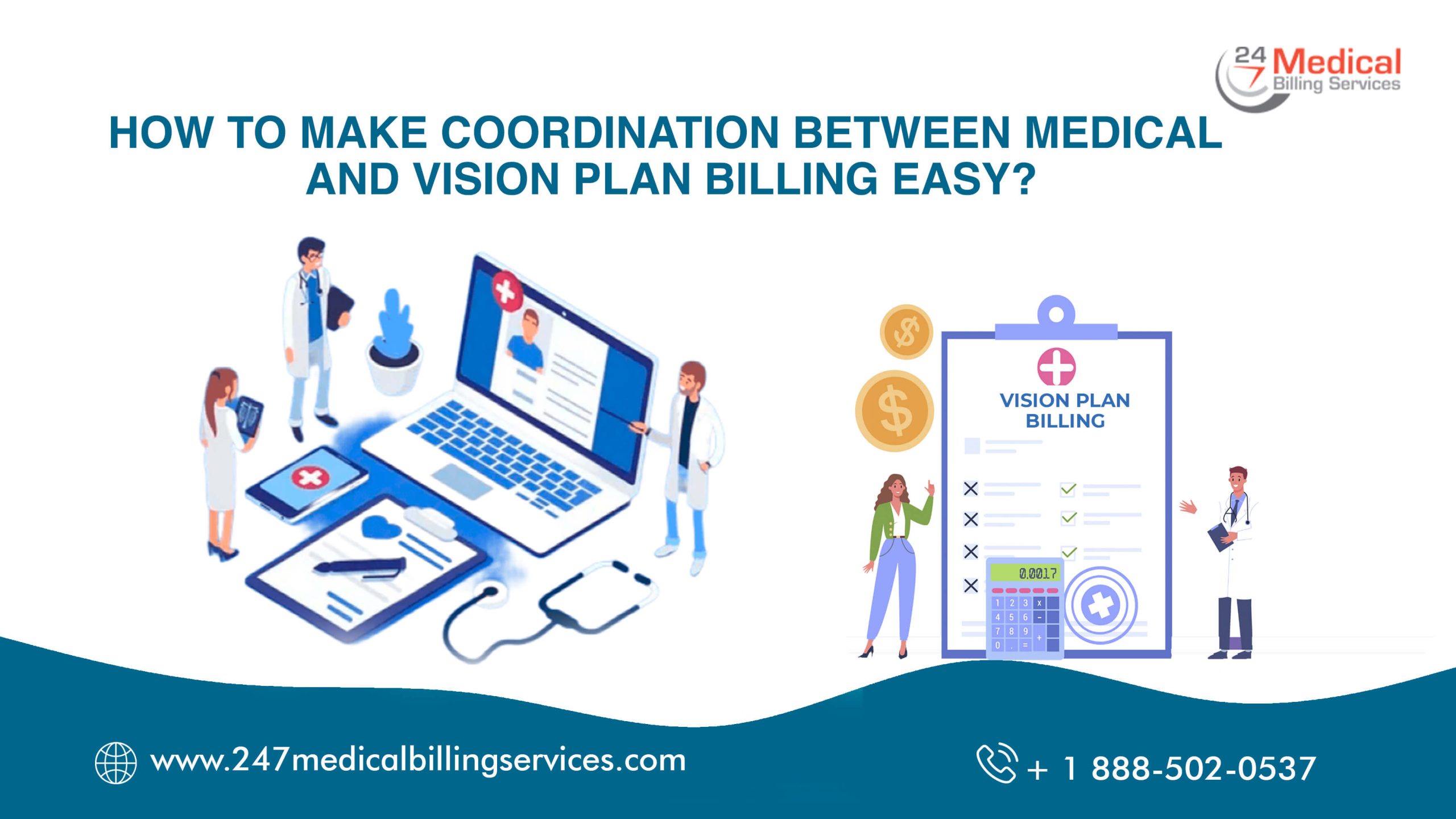
How to Make Coordination between Medical and Vision Plan Billing Easy?
Many patients have vision plans as well as medical insurance plans. It can be challenging to select which one to bill, especially when patients want to be involved and are concerned about how much they will have to pay. Patients may even request that you charge their vision plan rather than their medical insurance. By following some strategies, you can make coordination between medical and vision plan billing more efficient and effective.
While it is standard billing practice to choose which plan (vision or medical) to bill depending on the patient's major complaint and diagnosis, this is only sometimes possible. Before the appointment visit, it is necessary to confirm both vision policies and medical insurance.
Let's take a look at how to make coordination between medical and vision plan billing easy:
Medical vs. Vision Insurance Plans
With the pending current healthcare reforms, the discrepancy between vision insurance plans and medical insurance plans has placed optometrists in a billing predicament that other professions have yet to see. Dentistry is the closest equivalent situation. Optometrists must grasp the benefits of having both medical and vision insurance options accessible for billing purposes, as well as how to properly design a strategy that includes both medical and vision plans to benefit both the patient and the practitioner.How to Take Advantage of Both Plans?
The following steps should be followed to grab the advantage of both plans:- The patient's primary complaint must drive the rationale for the visit. The principal complaint must be medical to bill primary medical insurance.
- The presenting grounds for the patient's visit should include adequate documentation of the patient's medical condition(s), high-risk medications, and related eye symptoms.
- A standard of care is proper objective testing with documentation and reporting.
- Finally, accurate diagnostic and billing coding and patient communication of the treatment plan complete the SOAP format that optometrists are trained to use.
How to Coordinate Benefits?
Coordinating benefits for medical exams between patients' primary medical insurance and their regular carriers not only serves patients but also permits doctors to be paid more equitably for their services. If the doctor performs a medical eye exam, the reimbursement should also reflect this. Due to the higher degree of care, risk, decision-making, and knowledge, medical reimbursements pay more than routine benefits.Strategy to be Implemented
To use the medical/vision plan billing technique, the following steps should be implemented:- Bill the exam and refraction to the medical carrier, and then identify the medical diagnosis because the significant complaint is medical.
- Assign the refraction to a routine (refractive) diagnosis so that you can bill VSP as secondary once the medical claim is processed.
- After receiving payment from medical, post the payments and write-offs in accordance with the medical carrier's EOP (explanation of payment).
- Send a paper copy of the claim (CMS-1500) to VSP as a backup if there is any residual balance or the patient has a co-pay.
- Attach the primary medical EOP form to this claim and any applicable remark codes.
- A valid VSP exam authorization number is required.
- In claim box 19, enter "Coordination of Benefits. See the primary EOP."
- VSP will then pay up to their customary maximum towards the remaining balance not covered by the medical carrier, which usually includes the refraction and a portion of the patient's copay because the medical co-pay is generally larger than the VSP copay.
Points to be Kept in Mind
- No Benefit of Submitting only the Refraction
- Use up the Patient’s VSP Eligibility

.png)